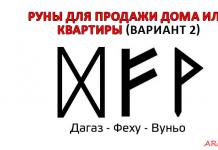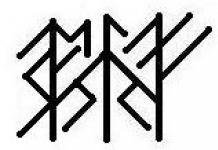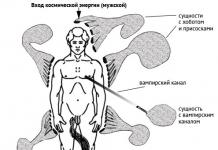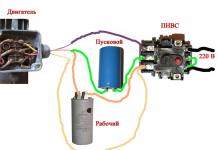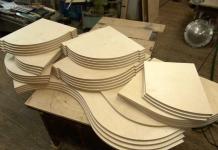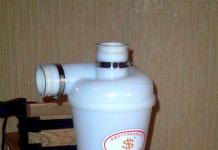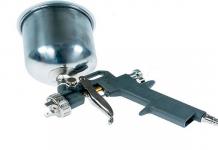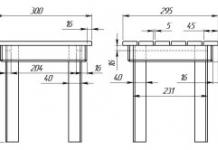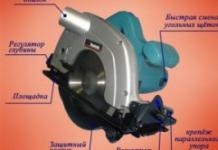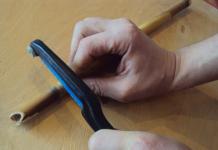Characteristics of works. Turning and finishing complex parts and tools with a large number of transitions in 6 - 7 grades, requiring rearrangements and combined fastening using various fixtures and precise alignment in several planes. Turning of external and internal shaped surfaces and surfaces associated with curved cylindrical surfaces, with hard-to-reach places for processing and measurements. Turning of long shafts and screws using several steady rests. Cutting and knurling of multi-start threads of various profiles and pitches. Final cutting of worms according to 8 - 9 degrees of accuracy. Performing operations for finishing a tool that has several mating surfaces. Turning complex large-sized parts and assemblies on universal equipment. Turning of new rolls and regrinding of worn-out rolls with calibration of a complex profile, including the performance of the specified work on the processing of parts and tools from difficult-to-machine high-alloy and heat-resistant materials using the combined plasma-machining method.
Must know: design features and rules for checking the accuracy of lathes of various designs, universal and special devices; technical characteristics and features of operation of the plasma heating unit; methods of installation and alignment of parts; geometry, heat treatment rules, sharpening and finishing of various cutting tools; fundamentals of the theory of cutting metals within the scope of the work performed; basic principles of calibration of complex profiles; rules for setting up and regulating control and measuring instruments and devices; rules for determining the cutting mode according to the reference book and the passport of the machine.
Work examples
1. Rudder stocks of medium and large ships - final turning.
2. Cable drums with a diameter of more than 500 mm - cutting of streams, complete turning.
3. Bolts, nuts, studs over M80 - final turning.
4. Spool boxes and summing spools of steam turbines over 500 mm long - complete turning.
5. Rolls of roughing stands of section mills and intermediate stands with closed calibers - complete turning.
6. Rolls of swaging roughing and semi-finishing stands when rolling rails, beams, channels, circles, corners, tractor shoes on rail and beam mills - complete turning.
7. Rolls of polishing stands for spring strip rolling - complete turning.
8. Smooth and stepped shafts over 5000 mm long - turning with a grinding allowance without and with the use of plasma heating.
9. Propeller shafts (with a ratio of length to diameter up to 30) - complete turning.
10. Crankshafts with six or more connecting rod journals - final turning of the connecting rod journals, trimming the cheeks and backing.
11. Distribution shafts for diesel engines with a length of over 1000 to 6000 mm - final processing.
12. Ship thrust shafts - final processing.
13. Shafts - gears of gear stands of rolling mills with a diameter of more than 500 mm, a length of more than 2000 mm - complete turning.
14. Shafts and axles over 2000 mm long - deep hole drilling and full turning.
15. Lead screws with thread length over 2000 to 7000 mm - complete turning.
16. Caliper screws over 15000 mm long - complete turning.
17. Screws and nuts with multiple trapezoidal threads - turning and threading.
18. Detachable inserts - complete turning.
19. Cylinder bushings for marine diesel engines with a diameter of more than 600 mm - final processing.
20. Threaded combs, threaded gauges, Morse taper gauges - finishing after grinding.
21. Parts of oil-steam pumps, chemical pumps and medium-sized installations made of special non-metallic materials, adjusting units, rotor wheel drive gearbox - complete turning.
22. Disks of the cap device, evaporator carousels, vacuum caps up to 500 mm in size - final processing.
23. Water and steam injectors - complete turning.
24. Taper gauges (plugs, bushings) for propeller shafts - fine boring of the cone according to the gauge with finishing.
25. Gauges (plugs, rings) with conical threads, conical (plugs, bushings) with a diameter of more than 100 mm - fine-tuning, fine-tuning of the thread.
26. Complex high-pressure valves with a large number of transitions, with alignment and cleanliness of machining according to class 10 - complete turning.
27. Columns of hydraulic presses up to 15000 mm long - complete turning.
28. Cases of DUIM products - final processing.
29. Cases of complex high-pressure valves with a large number of transitions with alignment up to 0.05 mm - final processing.
30. Cases - processing according to the template of the outer spheres with polishing up to class 8 of cleanliness and boring according to the template of the inner sphere.
31. Cases with a large number of internal and external transitions - processing according to H7.
32. Gear housings - complete turning.
33. Cases of hermetic high-pressure connectors are complex - complete turning.
34. Backstage of forging and pressing equipment - complete turning.
35. Matrices, punches for forming, punching, drawing dies; forging dies and molds of a complex profile with polishing to the size of the matrix for molds - boring of spherical sockets according to a template.
36. Threaded laps with triangular, rectangular and trapezoidal threads - complete turning.
37. Complex fixtures - boring on the machine support.
38. Rotors of complex centrifuges - complete processing.
39. Whole-forged steam turbine rotors - pre-treatment.
40. Valve seats - processing of radius surfaces according to the template.
41. Glasses for hermetic connectors complex - full turning.
42. Stern tubes - finishing.
43. Worm cutters, modular, angular and two-angle asymmetric cutters with a diameter of more than 200 mm - final threading.
44. Compressor cylinders - complete turning.
45. Cylinders of hydraulic presses - boring holes.
46. Multi-start worms - final threading.
47. Connecting rods - complete turning.
48. Spindles of lathes over 1000 mm long - complete turning.
49. Cylindrical gears, smooth pulleys and for V-belt transmissions with a diameter of more than 1000 mm, bevel and worm gears with a diameter of more than 600 mm - complete turning.
50. Cylindrical gears up to 2000 mm in diameter, smooth pulleys - complete turning with plasma heating.
51. Adjustable pitch propeller shafts up to 10,000 mm long - finishing.
MINISTRY OF LABOR AND SOCIAL DEVELOPMENT
RUSSIAN FEDERATION
RESOLUTION
ON THE APPROVAL OF A UNIFIED TARIFF AND QUALIFICATION
DIRECTORY OF WORKS AND PROFESSIONS OF WORKERS, ISSUE 5, SECTION
"GEOLOGICAL EXPLORATION
The Ministry of Labor and Social Development of the Russian Federation decides:
1. Approve the Unified Tariff and Qualification Handbook of Works and Professions of Workers (ETKS), issue 5, section "Geological exploration and topographic and geodetic work", developed by the Central Bureau of Labor Standards of the Ministry of Labor and Social Development of the Russian Federation.
2. With the entry into force of this Decree on the territory of the Russian Federation, the Unified Tariff and Qualification Reference Book of Works and Professions of Workers, Issue 5, approved by the Decree of the State Committee for Labor of the USSR and the Secretariat of the All-Union Central Council of Trade Unions of November 19, 1984 No. 334 / 22-74, is not applied.
3. Recommend to federal executive authorities, executive authorities of the constituent entities of the Russian Federation and organizations, taking into account the need, to submit to the Central Bureau of Labor Standards applications for the publication of ETKS issue 5, approved by this Decree.
4. To ensure the publication of the required number of copies of the said issue by the Central Bureau of Labor Standards.
Minister of Labor
and social development
Russian Federation
S. KALASHNIKOV
Approved
Decree of the Ministry of Labor of Russia
UNIFIED TARIFF AND QUALIFICATION DIRECTORY
WORKS AND PROFESSIONS OF WORKERS
ISSUE 5
SECTION "GEOLOGICAL EXPLORATION
AND TOPOGRAPHIC AND GEODETIC WORKS"
The Unified Tariff and Qualification Reference Book of Works and Professions of Workers (ETKS), issue 5, section "Geological exploration and topographic and geodetic work" was approved by Decree of the Ministry of Labor and Social Development of the Russian Federation dated February 17, 2000 No. 16.
ETKS was developed by the Central Bureau of Labor Standards of the Ministry of Labor and Social Development of the Russian Federation with the participation of the All-Russian Research Institute of Economics of Mineral Raw Materials and Subsoil Use of the Ministry of Natural Resources of the Russian Federation, the Central Research Institute of Geodesy, Aerial Photography and Cartography, and taking into account the opinion of the Federation of Independent Trade Unions of Russia .
Tariff-qualification characteristics are used in the tariffing of work and the assignment of qualification categories to workers in organizations, regardless of their form of ownership and organizational and legal forms, where there are productions and types of work specified in this section, except for specially stipulated cases.
Introduction
This issue of the Unified Tariff and Qualification Handbook of Works and Professions of Workers (ETKS) was developed on the basis of the previously existing ETKS, issue N 5, approved by the Decree of the USSR State Committee for Labor and the Secretariat of the All-Union Central Council of Trade Unions of November 19, 1984 N 334 / 22-74. Its development is caused by a change in production technology, an increase in the role of scientific and technological progress in production activities, an increase in requirements for the level of qualifications, general educational and special training of workers, quality, competitiveness of products in the domestic and foreign markets, as well as a change in the content of labor.
The categories of work are established according to their complexity without taking into account working conditions (with the exception of extreme cases that affect the level of complexity of work and increase the requirements for the qualifications of the performer).
The tariff-qualification characteristic of each profession has two sections.
The "Job Specification" section contains a description of the work that the worker must be able to perform.
The "Must Know" section contains the basic requirements for the worker with regard to special knowledge, as well as knowledge of regulations, instructions and other guidance materials, methods and means that the worker must apply.
The tariff and qualification characteristics provide a list of jobs that are most typical for a given category of the worker's profession. This list does not exhaust all the work that a worker can and should perform. The administration of the organization may develop and approve, in agreement with the trade union committee or other representative body authorized by employees, an additional list of works corresponding in complexity to those contained in the tariff and qualification characteristics of the professions of workers of the corresponding categories.
In addition to the work provided for in the "Characteristics of work" section, the worker must perform work on the acceptance and delivery of shifts, cleaning the workplace, fixtures, tools, as well as maintaining them in proper condition, maintaining established technical documentation.
Along with the requirements for theoretical and practical knowledge contained in the "Must Know" section, the worker must know: rules and regulations on labor protection, industrial sanitation and fire safety; rules for the use of personal protective equipment; requirements for the quality of work (services) performed; types of marriage and ways to prevent and eliminate it; production signaling; requirements for the rational organization of labor in the workplace.
This section includes the professions of workers specific to geological exploration and topographic and geodetic organizations, which provide for knowledge of labor protection rules when performing drilling and blasting operations and work with ionizing sources, as well as knowledge of the rules for carrying out environmental and subsoil protection measures. Workers whose professions involve driving a car, tractor or performing drilling and blasting and perforating and blasting operations must have the appropriate documents.
A worker of a higher qualification, in addition to the work listed in his tariff and qualification characteristics, must be able to perform the work provided for by the tariff and qualification characteristics of workers of a lower qualification, as well as supervise workers of lower ranks of the same profession. In this regard, the works given in the tariff-qualification characteristics of lower ranks, as a rule, are not given in the characteristics of higher ranks.
When filling out the work book of a worker, as well as when changing the tariff category, the name of his profession is recorded in accordance with the ETKS.
SECTION "GEOLOGICAL EXPLORATION
AND TOPOGRAPHIC AND GEODETIC WORKS"
§ 1. Engraver of original topographic maps
4th category
Characteristics of works. Participation in the production of original topographic maps (plans). Engraving and drawing contours of the relief with the number of horizontal lines up to 20 per 1 sq. dm topographic map (plan). Engraving and drawing hydrography and line elements of the content of a topographic map (plan), characterized by open, flat terrain with floodplains and sparse vegetation, hilly and foothill areas with a road network, open clean sands or sands fixed by grassy vegetation, with the number of contours up to 30 per 1 sq. dm. Engraving of geodetic substantiation points. Dimensional check and engraving of frame and kilometer grid. Cutting from proofs and stickers of geographical names, numbers, symbols, marginal design, made on a phototypesetter. Retouching of engraved elements of hydrography. Refueling on positive copies. Correction of corrective remarks. Sharpening and editing of engraving tools and devices.
Must know: purpose of topographic maps (plans); fundamentals of the technology of making originals of topographic maps (plans); technology for preparing topographic maps (plans) for publication; manufacturing accuracy and the content of the technological map (plan); standards for determining I - III categories of complexity of compiling and publishing works; conventional signs; rules for editing, sharpening and using engraving tools and devices; current instructions and instructions for preparing original topographic maps (plans) for publication.
§ 2. Engraver of original topographic maps
5th category
Characteristics of works. Engraving and drawing contours of the relief of a topographic map (plan) with the number of contour lines from 20 to 100 per 1 dm 2 . Engraving and drawing hydrography and line elements of the content of a topographic map (plan), characterized by flat forested terrain with large swampy areas, foothill areas with plantations of industrial crops, orchards and orchards, floodplains of rivers overgrown with forests and shrubs with the presence of oxbow lakes, channels, lakes ; settlements of rural type, with the number of circuits from 30 to 100 per 1 dm 2 .
Should know: technology of making originals of topographic maps (plans); standards for determining IV - VII categories of complexity of compiling and publishing works.
§ 3. Engraver of original topographic maps
6th category
Characteristics of works. Engraving and drawing contours of the relief of a topographic map (plan) with more than 100 horizontal lines per 1 sq. dm. Engraving and drawing hydrography and dashed elements of the content of a topographic map (plan), characterized by a mountainous taiga area, large rural-type settlements; industrial regions with a highly developed network of railways and highways; settlements in mountainous areas, with the number of circuits more than 100 per 1 dm 2 .
Should know: technology of making originals of topographic maps (plans); standards for determining VII - X categories of complexity of compiling and publishing works.
§ 4. Measurer at topographic-geodesic and mine-surveying works
2nd category
Characteristics of works. Participation in carrying out topographic-geodesic and mine-surveying works. Selection of characteristic points of the relief and contours. Opening and closing the center of a geodetic sign or benchmark. Installation of rails on shoes, crutches, benchmarks, stakes, piles and other selected points of the terrain. Clearing the route for sights. Measurement of lines with tape, cable, cord, tape measure. Hanging lines. Production and installation of stakes and sighting milestones. Marking of pickets during leveling. Fixing benchmarks and pickets. Installation of block machines of various systems, tripods with rear sights and tripods of lot machines. Stretching wire on tripods, hanging and lowering weights, winding wire on drums and stacking drums in boxes. Descent and fixing of plumb lines. Participation in soundings when surveying underground utilities. Loading, unloading and transportation (transfer) of field equipment, equipment and instruments. Setting up a field camp.
Must know: general concepts of topographic-geodesic and surveying works; rules for selecting characteristic points of relief and terrain contours; rules for the use of measuring instruments, arrangement of machines, blocks, tripods; the order of arrangement of basic tripods with rear sights; purpose, rules for the use, transportation, storage and packaging of topographic and geodetic and mine surveying instruments, tools and equipment; the procedure for clearing the route for sights, installing milestones and rails; rules for fixing temporary benchmarks and pickets.
§ 5. Measurer at topographic-geodesic and surveying works
3rd category
Characteristics of works. Carrying out topographic-geodesic and surveying works. Participation in the verification and installation of topographic-geodesic and mine-surveying devices and tools at the point (point) of observation. Instrumental alignment of the level on the rail. Participation in reconnaissance of the area, binding landmarks and measuring the height of the sign. Preliminary search for starting points. Selection of transition points. Management of work on clearing the tracks for sights. Delivery to the point of triangulation or polygonometry of heliotropes, lanterns, instruments for meteorological measurements, high-precision optical instruments. Supply of light signals or reflected light signals from a triangulation or polygonometry point in the direction of the observed point using special devices. Carrying out meteorological measurements at the location of the reflector. Carrying out simple calculations. Keeping records in the field journal.
Should know: purpose of topographic-geodesic and surveying works; the procedure for maintaining a field journal; rules for checking and installing topographic-geodesic and mine-surveying instruments and tools at the point (point) of observation; rules and procedure for leveling the level on the rail by plumb; rules for finding starting points and choosing transition points; constructions of geodetic and surveying signs; methods for determining the stability and rigidity of signals; the correctness of the laying of centers and reference points; requirements for the conditions of visibility and images; device and rules for handling heliotrope, lantern and reflectors; light signaling; rules for storage and care of reflectors, batteries and batteries; rules for performing meteorological measurements at reflector locations; methods for checking optical devices.
§ 6. Measurer at topographic-geodesic and surveying works
4th category
Characteristics of works. Performing topographic-geodesic and mine surveying measurements when carrying out soundings for surveying the shelf, inland waters and seas. Installation of high-precision optical instruments and reflectors and connection of their power sources. Providing communication and signaling with adjacent points. Taking readings of topographic-geodesic and mine-surveying instruments and instruments. Keeping records in the field book, performing page-by-page controls and calculations to determine the average values of the measured values. Participation in the preparation and drawing of diagrams, profiles, graphs, as well as in the design of measurement materials. Performing geodetic and mine surveying measurements in the course of construction and installation works. Removal of working height marks (height horizon) from one zone of the construction and installation site to another (from floor to floor, from tier to tier) using a level gauge or a hose level (communicating vessels). Instrumental control of the horizontal and vertical position of the erected structures and measurement of geometric deviations from the design parameters allowed during their installation. Laying marks of benchmarks and marks on beams, columns, lining of mine workings, etc.
Should know: features of measurements when carrying out soundings for surveys of the shelf, inland waters and seas; rules for installing high-precision optical instruments at the place of observation, taking readings according to the nomogram; rules for maintaining technical documentation and processing the results of field observations; symbols for geodetic and mine surveying plans, construction and installation drawings, general plans and construction plans; signaling rules for high-rise and underground construction, including when working in a compressed air zone; removal and fixing of absolute and conditional horizons; rules and procedure for conducting control checks of the horizontal and vertical position of structures; permissible geometric deviations from the project during the installation of structures and their elements.
§ 7. Measurer at topographic-geodesic and surveying works
5th category
Characteristics of works. Performing topographic, geodetic and mine surveying measurements during construction and installation works using high-precision vertical sighting optical instruments. Installing devices and taking readings according to the nomogram. Measurement and verification of the geometric parameters of blocks, columns, crossbars and other building structures. Planned and high-altitude survey of rows of piles, columns, etc. Instrumental support of the processes of installation of structures in the design position and straightening of crane tracks. Removal of the mounting horizon in nature under the guidance of a surveyor or mine surveyor. Participation in the preparation and drawing of executive schemes for mounted structures, technological blocks, assemblies.
Must know: the rules for performing topographic-geodesic and mine surveying measurements with high-precision vertical sighting devices at construction and installation works; rules and procedure for measuring and checking the geometric parameters of building structures, carrying out the installation horizon in nature; rules for the design of executive schemes for mounted structures, blocks and assemblies.
§ 8. Logger
4th category
Characteristics of works. Performance of work on well logging. Participation in the installation, dismantling and repair of logging equipment at the drilling rig. Checking the serviceability of logging equipment. Carrying out measurements and identifying places of current leakage. Elimination of damage in the insulation of wires and logging cable. Participation in the descent and installation of instruments and devices at the wellhead. Participation in the maintenance of logging equipment and tools. Disconnection, recovery from the well, loading, unloading and transportation (transfer) of apparatus and equipment.
Must know: the sequence of geophysical surveys in wells; schemes, arrangement and principle of operation of logging and perforating equipment and equipment and rules for their operation; types of power sources used in geophysical surveys in wells, and rules for handling them; rules and procedure for checking the insulation of logging cables and its repair; methods of performing soldering work; basic information about explosive materials and rules for handling them; procedure for maintenance of logging equipment; methods for manufacturing probes and splicing logging cables.
§ 9. Logger
5th category
Characteristics of works. Performance of work on logging, pneumatic processing, perforation and torpedoing in boreholes up to 1000 meters deep for geophysical studies of rocks. Installation of a lift, laboratories and block-balance at the well. Descent into the well and connection of downhole tools, firing apparatuses and torpedoes. Mounting, dismantling and checking the serviceability of equipment, equipment and working schemes for logging, pneumatic treatment, perforation and torpedoing in wells and for near-well and cross-well surveys. Grounding device. Checking for warning labels, measuring the price of the first label and measuring the cable. Troubleshooting of used equipment, tools; elimination of damage to the insulation of braided and armored cables. Disconnection, recovery from the well, loading and unloading of equipment, equipment and equipment.
Must know: basic concepts of boreholes, their designs; procedure for performing various types of geophysical surveys in wells; types, arrangement and rules of operation, installation and dismantling of equipment, equipment and torpedoes used in logging, perforation, torpedoing and geophysical surveys in wells; fundamentals of electrical engineering; brands of cables and wires; types of power supplies and rules for using them; grounding methods; types of explosive materials and radioactive substances, rules for handling them; basic rules and procedure for conducting electrical work; rules for transportation and storage of equipment, apparatus and special substances; rules and procedures for the repair of equipment.
When performing work on logging, perforation and torpedoing in boreholes with a depth of more than 1000 to 4000 m, directional wells with a depth of up to 1500 m - 6th category.
When performing work on logging, perforation and torpedoing in boreholes with a depth of more than 4000 to 5000 m, directional wells with a depth of more than 1500 m - 7th category.
When performing work on logging, perforation and torpedoing in boreholes with a depth of more than 5000 m, in horizontal wells, with weighted drilling mud with a density of more than 1.6 g/cm 3 in wells with a depth of more than 1500 m - the 8th category.
Requires secondary vocational education.
Note. When performing work on logging, perforation and torpedoing in boreholes at sea, the billing of loggers of 4-7 categories is one category higher.
§ 10. Logging station operator
4th category
Characteristics of works. Management of gas logging, self-propelled logging and perforating stations, logging hoists during geophysical surveys and perforating and blasting in wells up to 1000 meters deep. Preparation of stations and lifts for transportation and operation. Selection, preparation of the site, as well as installation of the laboratory, generator group and lift. Installation and dismantling of equipment. Connection of stations to the power and lighting network. Descent of equipment (devices) into the well and their rise. Performing shifts and participating in scheduled maintenance and current repairs of stations, laboratories, lifts, winches, gasoline engines and generators; electrolyte change and battery charging. Loading, unloading and transportation of equipment, apparatus and tools.
Must know: well designs; the procedure for conducting geophysical surveys in wells; rules for descent and ascent of vehicles; rules for the transportation of logging and perforating equipment and equipment, their arrangement and operating rules; rules for conducting shift and scheduled maintenance and current repairs of equipment for gas logging, perforating and logging stations; types and technical characteristics of equipment, apparatus, generator and stations; brands of cables and wires; fundamentals of electrical engineering; procedure and rules for blasting; rules and modes of charging batteries; grounding device and methods for finding faults in the network; signs of malfunctions of gasoline engines, generator and auxiliary mechanisms of stations and ways to eliminate them.
When conducting geophysical surveys and perforating and blasting in wells with a depth of more than 1000 to 4000 m, as well as in directional wells with a depth of up to 1500 m - 5th category.
When carrying out geophysical surveys and perforating and blasting in wells with a depth of more than 4000 to 5000 m, as well as in directional wells with a depth of more than 1500 m - the 6th category.
When conducting geophysical surveys and perforating and blasting in wells with a depth of more than 5000 m, horizontal wells, wells with weighted drilling mud with a density of more than 1.6 g/cm 3 - 7th category.
§ 11. The driver of the installation of excitation of seismic signals
6th category
Characteristics of works. Control of the installation of excitation of seismic signals of impulse or vibration action. Checking and adjusting the mechanical, hydraulic and electrical components of the installation. Preparation of seismic signal excitation sources for operation and their testing. Measurement of operating parameters of the installation. Excitation of an impulse seismic signal. Maintaining communication with the seismic station. Monitoring the operation of gas, electrical, mechanical and other installation systems. Identification and elimination of malfunctions in the operation of the installation. Performing shift-by-shift and participation in scheduled maintenance and current repairs of the installation systems.
Shall know: the arrangement of gas, mechanical systems, electrical and radio-electronic units of the installation of excitation of seismic signals, the rules of its operation and the performance of maintenance, repair and regulation; the order and sequence of seismic surveys on the profile; requirements for the installation as a source of seismic signals.
§ 12. Drilling machine driver
4th category
Characteristics of works. Management of a boring machine (unit, crane) when driving pits. Participation in the planning of the site for the placement of the drilling rig. Participation in the installation, dismantling, transportation and preparation for the work of the drilling rig. Participation in the performance of operations during the sinking of pits. Monitoring the condition and proper operation of equipment and tools. Performing shifts and participating in scheduled maintenance and current repairs of the drilling rig. Participation in loading and unloading operations.
Shall know: methods and technology of driving pits; device and rules for the operation of the borehole installation and electrical equipment; rules and procedure for maintenance and current repair of the drilling rig; installed alarm.
§ thirteen.
3rd category
Characteristics of works. Installation, dismantling and repair of wooden geodesic signs, reinforced concrete pylons and concrete monoliths for centers and points of triangulation and polygonometry. Production of fundamental and ground benchmarks and leveling marks for leveling points. Clearing space for geodesic markers. Arrangement of gates, lifting masts and other means for tripping operations. Preparation of elements, units and assembly of wooden geodetic signs and individual parts of signs on the ground. Lifting of assembled geodetic signs or individual parts of the sign with their subsequent fastening. Laying centers and setting landmarks. Manufacture, assembly, installation and removal of molds for casting reinforced concrete pylons, concrete monoliths and benchmarks. Marking and digging pits. Knitting reinforcement. Preparation and laying of concrete mass. Cleaning, installation and backfilling of benchmarks and their external design. Performing carpentry, earthworks and concrete work in the construction and repair of geodesic signs, benchmarks, centers and points of triangulation or polygonometry. Loading, unloading and transportation of equipment, tools and materials. Preparation of documents for the delivery of geodesic signs and benchmarks for storage.
Must know: the purpose and arrangement of wooden geodetic signs, centers and points of triangulation and polygonometry, fundamental and ground benchmarks, identification marks, rock marks and benchmarks; the order of installation and dismantling of geodetic signs and the requirements for the quality of their manufacture; main types of connections of parts and structures; methods of lifting wooden geodetic signs in assembled form and their individual parts; methods and rules for fastening wooden geodetic signs, blocks, cables, ropes; technology for performing construction and installation, carpentry, earthworks and concrete works; the main types and properties of building materials used in the construction of wooden geodesic signs, benchmarks, centers and points of triangulation or polygonometry; the order of installation of reinforcing cages, the technology of concrete preparation; types and purpose of carpentry, metalwork and control and measuring tools; arrangement of centers and external design of geodetic signs.
§ 14. Installer of geodetic signs
4th category
Characteristics of works. Installation, dismantling and repair of metal geodetic signs up to 20 meters high and wooden geodetic signs from 20 to 40 meters high. Manufacturing and bonding of individual parts on the ground. Installation and dismantling of lifting devices and mechanisms. Performance of construction and installation works during the construction and repair of metal signs at a height. Carrying out locksmith and welding work. Preparation of documents for the delivery of geodesic marks for storage.
Must know: the purpose, design and elements of the details of metal geodetic signs; methods, procedure for installation, dismantling and repair of metal geodesic signs and requirements for the quality of their manufacture; methods and rules for fixing geodetic signs, their parts, blocks, cables, ropes; technology for performing construction, installation and welding works; main types and properties of materials used in the construction of metal geodetic signs; types and purpose of welding equipment, plumbing and carpentry tools.
When installing and dismantling metal geodetic signs over 20 to 40 meters high and wooden geodetic signs over 40 meters high - 5th category.
When installing and dismantling metal geodetic signs over 40 meters - 6th category.
§ 15. Motorist of an electrical exploration station
4th category
Characteristics of works. Servicing the generator group of the electrical exploration station. Preparation of the site and installation of the generator group, ensuring the necessary mode of operation of the engine during the measurements. Unwinding and connecting wires for intercom and current channel. Adjustment of the main components of the engine, contactors and relays of the generator group. Inspection, lubrication, refueling and grounding of the generator group, installation of an antenna for radio communication. Electrolyte change and battery charging. Loading and unloading of used equipment and apparatus during their transportation. Performing shift maintenance and participation in the current repair of the generator group.
Must know: the device of the generator group; rules for the technical operation and maintenance of generators; methods for identifying and eliminating faults in the engine, generator, transmission; scheme for the implementation of the production process using an electrical exploration station; basic information on electrical and radio engineering; wire brands.
§ sixteen.
5th category
Characteristics of works. Performing scheduled maintenance, current unscheduled repairs of geophysical equipment, apparatus, instruments and individual units at the work site or at the field bases of organizations. Assembly, dismantling, adjustment, regulation and testing of small geophysical equipment, apparatus and instruments. Determination of the need to replace individual components (parts) and the need to send them for repair in stationary conditions.
Must know: basics of electrical and radio engineering; basic electrical and radio circuits, types, device, procedure, methods of dismantling and assembling geophysical equipment, apparatus and instruments; rules and technology for maintenance, repair, adjustment and adjustment of geophysical equipment, instruments and individual units; soldering methods.
§ 17. Adjuster of geophysical equipment
6th category
Characteristics of works. Adjustment and repair of analog seismic, electrical prospecting, logging, gas logging and other geophysical stations, gravimeters, gravity variometers, aeromagnetometers, potentiometers, seismic receivers and other geophysical instruments, equipment and devices. Assembly, dismantling, adjustment, adjustment, testing and standardization of geophysical equipment, apparatus and instruments.
Must know: basics of electrical and radio engineering; basic electrical and radio circuits; types, arrangement, procedure, methods of dismantling and assembly of geophysical stations, instruments, equipment and other devices, technology and rules for setting up, adjusting, standardizing, repairing geophysical instruments, equipment, devices and their complexes; technology of electrical and radio installation works; device, rules for the use and repair of measuring instruments; rules for the use and storage of technical means and materials during repair work; rules for handling radioactive sources.
When performing work with electronic digital complexes and with radioactive sources - 7th category.
Requires secondary vocational education.
§ 18. Concentrator of minerals and concentrates
2nd category
Characteristics of works. Washing and sorting of raw materials for enrichment. Enrichment of fragments of quartz crystals and vein quartz by chipping off defective, fractured, ferruginous, substandard areas and foreign impurities using a chisel and special hammers. Separation of enriched raw materials by grades. Delivery of raw materials to the place of storage. Waste removal.
Must know: external signs of high-quality raw materials; basic physical and mechanical properties of materials and rocks; requirements for raw materials by normative and technical documentation; terms and definitions used in the classification of raw materials by variety and grade.
§ 19. Concentrator of minerals and concentrates
3rd category
Characteristics of works. Enrichment of rock crystal for melting and jewelry and ornamental stones in raw materials by hand. Filing off-grade sections on a scoring machine. Viewing and detection of defects in raw materials (gas-liquid and mineral inclusions) and marriage in reflected electric light on light tables and under a table lamp. Separation of enriched raw materials by grades and preparation for storage.
Must know: external signs and basic physical and mechanical properties of high-quality raw materials (quartz and colored stones); requirements for raw materials by normative and technical documentation; terms and definitions used in the classification of raw materials by varieties and grades; device and operating rules of the serviced equipment.
§ 20. Concentrator of minerals and concentrates
4th category
Characteristics of works. Enrichment of piezo-optical quartz of 1 and 2 grades, Icelandic spar from crystal raw materials and jewelry stones in raw materials by hand. Viewing, revealing the marriage of raw materials in reflected electric light, filing of raw materials. Measurement of a mono-domain of a piezo-optical raw material with a caliper with an error of no more than± 1 mm. Enrichment of concentrates by blowing them manually or on devices; preparation of concentrates for blowing; starting, monitoring and stopping devices. Uniform distribution of the mineral and regulation of the output of the mineral on the device. Identification and elimination of malfunctions in the operation of the device. Sorting and preparation for storage of enriched raw materials.
Must know: external features and basic physical and mechanical properties of raw materials (quartz, Icelandic spar and colored stones); permissible natural defects of raw materials; requirements for raw materials by normative and technical documentation; the main properties of each type of raw material and their manifestations during enrichment; terms and definitions used in the classification of raw materials; classification of colored stones; device, rules of operation and maintenance of the equipment used; rules for the use of diamond and control and measuring tools; sampling and processing rules; methods of blowing concentrates; associated minerals, rocks and minerals found in concentrates.
§ 21. Concentrator of minerals and concentrates
5th category
Characteristics of works. Enrichment of piezo quartz grade "Extra", quartz-optical and precious stones in raw materials by hand. Viewing, filing and identifying the marriage of raw materials in reflected electric light, visually and with the help of an immersion liquid. Measurement of the iono-domain of piezo-optical raw materials. Extraction of crystals and inclusions from host rocks by chemical etching of soluble rock components. Accounting for waste of precious raw materials. Sorting enriched raw materials and preparing them for storage.
Must know: external features and physical and mechanical properties of raw materials (optical quartz and precious stones); permissible natural defects of raw materials, characteristic for each type of stone; requirements for raw materials by normative and technical documentation; special properties of each type of raw material and their manifestation during enrichment; terms and definitions used in the classification of raw materials by varieties and grades; classification of gems; device, rules for the use of diamond and control and measuring tools.
§ 22. Geological sampler
4th category
Characteristics of works. Selection of furrow, burrow, hole and other samples in mine workings to determine the quality and quantity of minerals, calculate their reserves in the bowels. Contouring and gouging rock with high precision and tight tolerances using jackhammers, rock drills, pneumatic and electric samplers and manually. If necessary - drilling holes, sawing furrows, measuring the cross section of the furrow, the area of the tear, the volume and mass of the samples. Labeling and packaging of samples. Movement and consolidation of regiments. Preparation of samplers, jackhammers and perforators for work, their connection to the electrical and air supply network. Bottom sampling at the sea and other water bodies at a depth of up to 1500 meters. Maintenance of used equipment, identification and elimination of minor malfunctions in its operation. Maintenance of technical documentation. Accounting and storage of samples.
Must know: basics of microtectonics, textures and structures of ores; physical properties of rocks and direction of split lines; methods of using split lines; device, structures, rules for the operation of pneumatic and electric tools, drilling patterns and their depth; types of tools used; technical conditions and standards for the selection of geological samples and the development of rock by manual and mechanized methods; rules for using the installed alarm; arrangement of technical means and technology of bottom sampling.
When taking bottom samples at sea and in other water bodies at a depth of more than 1500 meters - 5th category.
§ 23. Washer of geological samples
2nd category
Characteristics of works. Washing of concentrate samples under the guidance of a more highly qualified geological sample washer. Participation in the loading of sands into trays, buckets, washing devices and installations, their wiping, washing of granular material, precipitation of heavy fractions. Unloading, drying and packing concentrates.
Must know: basic rules for washing and establishing the concentration of geological samples; the composition of minerals often found in concentrates; external signs of metal-bearing and waste rocks.
§ 24. Washer of geological samples
3rd category
Characteristics of works. Washing and finishing of bulk concentrate samples in trays, ladles, on washing and finishing devices or installations to ensure the yield of useful concentrate minerals of at least 70% with a grain size of 1 mm or more. Loading of sands, their screening, washing of granular material, removal of clay matter (elutriation), concentration of heavy fractions, washing of the sample to a "gray" concentrate. Packaging of metal washed from samples with indication of sample numbers. Record keeping of sample washings.
Must know: the purpose, rules and techniques of washing and finishing concentrate samples; technological modes of operation of flushing and finishing devices and installations, depending on the material composition of the sands; rules for labeling, packaging and accounting for washed samples.
§ 25. Washer of geological samples
4th category
Characteristics of works. Washing and finishing of bulk concentrate samples in trays, ladles, on washing and finishing devices or installations to ensure the yield of useful concentrate minerals of at least 90% with a grain size of 0.5 to 1.0 mm.
Shall know: classification of loose rocks according to washability and methods of elutriation in water; types of useful and related minerals; the influence of the speed of water movement on the release of concentrates from sands; rules for the processing of schlich samples.
§ 26. Washer of geological samples
5th category
Characteristics of works. Washing and finishing of control concentrate samples in trays, ladles, on washing-concentration devices or installations. Washing and finishing of bulk concentrate samples in trays, ladles, on washing and finishing devices or installations to ensure the yield of useful concentrate minerals of at least 95% with a grain size of less than 0.5 mm. Processing, labeling and accounting of washed control samples.
Shall know: device and rules for regulation of flushing and concentration devices or installations; characteristics and macro-features of useful and accompanying minerals in concentrates; rules for processing, labeling, accounting for control samples.
§ 27. Guide to geological prospecting and surveying
2nd category
Characteristics of works. Accompanying employees of geological organizations when moving along flat inhabited areas with the choice of the most convenient and safe direction (path) to the intended point and camp sites. Transportation of people and goods on horses, mules, donkeys, camels, deer and dogs. Packing, stacking, loading, fastening and unloading of goods. Repair of teams, wagons, sledges and pack equipment. Caring for draft animals, receiving and accounting for fodder, preparing fodder for current needs, feeding animals.
Must know: the location and local names of the main elements of the relief of the work area; location of wells, settlements, winter quarters, zaimok, nomad camps; the location and patency of the passes, fords, trails, roads; the most convenient and safe ways to the intended point, safe places for parking; rules for the transportation, packaging and placement of goods; rules for feeding and caring for draft animals; norms of limit loads on animals depending on their condition and local conditions; rules for providing draft animals with first veterinary aid in case of injuries and diseases.
When accompanied by employees of geological organizations in high-mountainous, desert, taiga, swampy areas - 3rd category.
When accompanying employees of geological organizations in uninhabited, mountainous, taiga, heavily swampy and desert areas, as well as when transporting people and goods by water transport - 4th category.
§ 28. Geological worker
2nd category
Characteristics of works. Clearing previously passed, sinking new and the elimination of small surface mine workings (ditches, kopushes and pits). Accompanying a specialist - a geologist on the route. Sorting duplicate samples and preparing them for testing. Compliance with the mode of use of water sources and measuring the water level. Cleaning of the alignment during hydrometric works. Drying, crushing and screening of lithogeochemical samples of loose rocks. Making bags, washing flasks and washing sampling bags. Packing, loading, unloading of field equipment, devices, tools, equipment. Transportation or carrying (in places inaccessible to vehicles) of goods. Maintenance and service of field equipment, instruments, tools and equipment. Participation in the selection of a camp site, setting up and removing tents. Protection of property, cleaning and ensuring normal sanitary and hygienic conditions in the parking area. Cleaning of residential and industrial premises, their periodic disinfection. Carrying out earthworks. Harvesting, splitting, carrying firewood and water; cooking food. Participation in the organization and elimination of field work.
Must know: the rules for the use, storage, packaging and transportation of field equipment, instruments, tools, equipment, various types of samples located on the territory of the camp, and when moving a geological party; rules for handling instruments, equipment, equipment and materials; rules for acceptance, storage, accounting for the consumption of products and their expiration dates; basics of cooking and culinary business.
§ 29. Geological worker
3rd category
Characteristics of works. Selection, packaging, labeling of rock samples from natural outcrops, single hand-made, litgeochemical, geobotanical samples, water and gas samples, furrow and schlich samples; selection of monoliths from loose rocks. Equipment for washing of concentrate samples. Washing of concentrate samples in a tray or ladle to a specified specific gravity or color. Drying of concentrate samples. Treatment of concentrates by blowing grains of various minerals and metals from gold, cassiterite, wolframite and other components. Taking readings from field devices and recording them in a log. Measurement of parameters of surface and underground water sources. Cleaning of alignments during hydrometric works. Mining and liquidation of shallow mine workings manually. Scattering of loose samples, ashing of biogeochemical samples, preparation and testing of borehole cores, duplicate samples of surface mine workings and natural outcrops, transfer of selected samples. Distance measurement. Participation in the reconnaissance of the area, the laying of peat exploration routes for topographic and geodetic surveys. Installation of benchmarks in pits and their external design. Measurement work on water intakes and lakes. Probing of peat and sapropel deposits. Selection, packaging, labeling of samples of peat, sapropel, mineral layers and bottom sediments for laboratory research. Participation in the determination of the stump content of a peat deposit, forest inventory work, the laying of trial tape counts, in electrical profiling and electrical sounding. Drilling small wells with motorized drills and manually, excavation work. Clearing of sight lines. Loading, unloading and transportation (transfer) of field equipment, equipment, tools.
Must know: basic information about the conduct of geological survey and prospecting; rules for selection, packaging, labeling and transportation of rock samples and samples; rules and procedures for sampling and washing concentrate samples; rules and techniques for stripping concentrates; places of the highest concentration of schlich minerals and metals found in schlich; rules for the operation and maintenance of field devices; elementary information about the physical and mechanical properties of rocks and the conditions of their occurrence; appointment of topographic and geodetic probing and sampling tools, rules for their use, storage and transportation; appointment of geodetic signs; rules for digging pits, clearing tracks and sights; basic concepts of forest inventory works; rules for the use of drilling tools and the device of motorized drills; technology of drilling wells manually and motorized drills.
§ 30. Worker at geophysical works
2nd category
Characteristics of works. Participation in the installation of seismic receivers, electrodes (grounding) on the ground and their connection to seismic or electrical prospecting lines. Transfer of geophones, electrodes and connecting wires in the course of work. Unwinding (layout) of wires of seismic, electrical prospecting and auxiliary lines. Troubleshooting connections, restoration of insulation and bandages. Participation in the manufacture of seismic streamers, feed lines. Preparation of sites and participation in the installation of gravimeters, logging equipment and block balance; participation in manual lifting operations. Core preparation for radiometric studies. Carrying out loading and unloading operations during the installation of equipment and equipment.
Must know: device, rules of operation, transportation and storage of equipment, instruments and equipment; basic techniques for working with an assembly tool.
§ 31. Worker in geophysical works
3rd category
Characteristics of works. Participation in the performance of geophysical work at a seismic station, in the connection (disconnection) of seismic streamers, in the installation of grounding and fencing. Maintenance of power supply systems (petrol units, chargers, batteries). Participation in the performance of geophysical work at the station of the explosive point, electrical exploration station. Loading (unloading) and transfer of explosives; making passive charges in the presence of an explosive. Checking the condition and gauging of blast holes. Together with the explosive, laying charges in the pits, lowering them into the wells, laying the lines of the detonating cord. Participation in the liquidation of the consequences of drilling and blasting. Detection and repair of damage to connections at an electrical exploration station. Grounding device and checking their quality. Maintenance of power supply systems (portable gasoline units, batteries, etc.). Installation of instruments and equipment at observation points.
Must know: arrangement of seismic and electrical prospecting lines, the system of their connections and connections to the station; ways of working with instrumentation; device and rules for handling the engine, generator and control devices of portable gasoline units; requirements for storage, transportation, maintenance and charging of acid and alkaline batteries; instructions and regulatory documents for the operation of equipment and materials used in geophysical work; basic properties and characteristics of explosive materials, requirements for their storage and transportation; methods of mounting passive charges and their transfer; rules for handling mounting tools and insulating materials; uniform rules for blasting.
§ 32. Worker in geophysical works
4th category
Characteristics of works. Preparation of seismic, electrical prospecting and auxiliary lines. Checking the quality of placement and connection of seismic receivers and electrical exploration installations (conductivity, leakage, etc.), identifying and eliminating faults in their operation. Participation in the manufacture of seismic streamer sections, electrical prospecting lines; installation of groups of seismic receivers. The device of various types of grounding and barriers. Search on the ground for points of the prepared observation network. Transfer and installation of gravimeters into the horizon. Verification, preparation for work and performance of operational observations using radiometric instruments. Registration in the field log of gravimeter and radiometer readings. Identification device. Sensitivity testing and standardization of radiometers. Condition monitoring, preventive maintenance and participation in the current repair of geophysical equipment.
Must know: basic information about the tasks and methods of the corresponding type of geophysical work; organization and technology of performance of production processes of field geophysical works; a system for marking observation points on the ground and installing geophysical instruments; rules for operation, maintenance, transportation and storage of geophysical instruments and equipment; basic techniques for installing electrical circuits, the procedure for working with an installation tool and instrumentation; instructions for conducting work by the appropriate method (explosive work, work with high voltage currents, ionizing radiation).
Note. When conducting geophysical surveys at sea from floating facilities, the tariffing of workers is one category higher.
§ 33. Rock grinder
2nd category
Characteristics of works. Peeling, rough processing of thin sections and polished sections for physical and mechanical studies. Measurement of samples and their splitting.
Must know: basic physical and mechanical properties of rocks and methods of their processing; used abrasives.
§ 34. Rock grinder
3rd category
Characteristics of works. Production of simple thin sections and polished sections from igneous and metamorphic rocks, rocks with a quartz content of up to 50%. Grinding cubes, plates, prisms, cylinders to study the physical and mechanical properties of rocks. Bandage of samples and their verification. Cover glass gluing. Washing of thin sections. Inspection of thin sections under a microscope. Preparation of adhesives. Preventive maintenance and current repair of used equipment. Labeling and accounting of manufactured sections.
Must know: features of processing and physical and mechanical properties of rocks; rules for the operation of devices, tools and equipment used in the processing of thin sections (samples); types and purpose of grinding (abrasive) materials; types and technology of preparation of adhesive compositions; technology of processing rocks and making thin sections from them; rules for labeling and accounting for thin sections (samples); requirements for the quality of thin sections; ways to achieve accuracy and purity of rock processing in the manufacture of thin sections.
In the manufacture of complex and non-standard (with an area of more than 4 cm 2 ) thin sections (samples) from sedimentary, weakly cemented and fractured rocks, as well as rocks with a quartz content of more than 50% - 4th category.
SCROLL
NAMES OF PROFESSIONS OF WORKERS PROVIDED BY THIS SECTION, INDICATING THEIR NAMES ACCORDING TO THE VALID ISSUES AND SECTIONS OF ETKS OF THE 1985 EDITION
|
p/n |
Name professions placed in this section |
Range discharges |
Name of professions according to the current issues and sections of the ETKS (editions of 1985) |
Range discharges |
release ETCS |
abbreviated Name section |
4 - 6 |
Engraver of original topographic maps |
4 - 6 |
Exploration |
|||
Measurer on topographic and geodetic and mine surveying |
2 - 5 |
mine surveying works |
2 - 5 |
- " - |
||
heliotropist |
- " - |
|||||
logger |
4 - 8 |
logger |
4 - 6 |
- " - |
||
Logging station operator |
4 - 7 |
Gas logging station operator |
- " - |
|||
Logging station lift operator |
4 - 5 |
- " - |
||||
3 - 4 |
- " - |
|||||
- " - |
||||||
Drilling machine driver installations |
Drilling driver unit |
Exploration |
||||
Installer of geodetic signs |
3 - 6 |
Installer of geodetic signs |
3 - 4 |
Same |
||
Rapper |
- " - |
|||||
Miner of electrical prospecting stations |
Miner of electrical prospecting stations |
- " - |
||||
Geophysical equipment adjuster |
5 - 7 |
Geophysical equipment adjuster |
- " - |
|||
Concentrator minerals and concentrates |
2 - 5 |
Concentrator concentrates |
- " - |
|||
Geological sampler |
4 - 5 |
Geological sampler |
- " - |
|||
Washer geological samples |
2 - 5 |
Washer geological samples |
2 - 5 |
- " - |
||
Explorer on geological searching and filming |
2 - 4 |
Explorer on geological searching and filming |
- " - |
|||
musher |
2 - 4 |
- " - |
||||
2 - 3 |
Worker on geological survey and prospecting work |
2 - 3 |
- " - |
|||
Geophysical worker |
2 - 5 |
2 - 4 |
- " - |
|||
radiometrist |
2 - 3 |
- " - |
||||
Grinder rocks |
2 - 4 |
Grinder rocks |
2 - 4 |
- " - |
SCROLL
NAMES OF PROFESSIONS OF WORKERS PROVIDED
THE ACTIVE SECTION OF THE ETKS ISSUE, WITH INDICATION OF THE CHANGED NAMES OF PROFESSIONS, SECTIONS AND ISSUATION NUMBERS IN WHICH THEY ARE INCLUDED
|
p/n |
The name of the professions for the current releases and sections of ETKS (1985 editions) |
Range discharges |
Name professions placed in this section of the ETKS |
Range discharges |
release ETCS |
abbreviated Name section |
heliotropist |
2 - 5 |
Exploration |
||||
Engraver of original topographic maps |
4 - 6 |
Engraver of original topographic maps |
4 - 6 |
Same |
||
Measurer on topographic and geodetic and mine surveying works |
2 - 5 |
Measurer on topographic and geodetic and mine surveying works |
2 - 5 |
- " - |
||
logger |
4 - 6 |
logger |
4 - 8 |
- " - |
||
musher |
2 - 4 |
2 - 4 |
- " - |
|||
Gas logging operator stations |
Logging station operator |
4 - 7 |
- " - |
|||
Driver logging station lift |
4 - 5 |
Logging station operator |
4 - 7 |
- " - |
||
Drilling machine operator |
Drilling machine driver installations |
Exploration |
||||
Installer of geodetic signs |
3 - 4 |
Installer of geodetic signs |
3 - 6 |
Same |
||
Miner of electrical prospecting stations |
Miner of electrical prospecting stations |
- " - |
||||
Engineer of a self-propelled logging station |
Logging station operator |
4 - 7 |
- " - |
|||
Geophysical equipment adjuster |
Geophysical equipment adjuster |
5 - 7 |
- " - |
|||
Concentrator concentrates |
2 - 5 |
- " - |
||||
Mobile seismic operator |
Seismic excitation machine operator signals |
- " - |
||||
Geological sampler |
Geological sampler |
4 - 5 |
- " - |
|||
Explorer on geological searching and filming |
Explorer on geological searching and filming |
2 - 4 |
- " - |
|||
Washer geological samples |
2 - 5 |
Washer geological samples |
2 - 5 |
- " - |
||
Worker at geological survey and search work |
2 - 3 |
Geological worker works |
2 - 3 |
Exploration |
||
Geophysical worker |
2 - 4 |
Geophysical worker |
2 - 5 |
Same |
||
radiometrist |
2 - 3 |
Geophysical worker |
2 - 5 |
- " - |
||
Rapper |
Installer of geodetic signs |
3 - 6 |
- " - |
|||
Range discharges |
||||||
Engraver of original topographic maps |
4 - 6 |
|||||
Measurer at topographic-geodesic and mine-surveying works |
2 - 5 |
|||||
logger |
4 - 8 |
|||||
Logging station operator |
4 - 7 |
|||||
Seismic signal excitation unit operator |
||||||
Drilling machine operator |
||||||
Installer of geodetic signs |
3 - 6 |
|||||
Miner of electrical exploration station |
||||||
Geophysical equipment adjuster |
5 - 7 |
|||||
Enricher of minerals and concentrates |
2 - 5 |
|||||
Geological sampler |
4 - 5 |
|||||
Geological sample washer |
2 - 5 |
|||||
Conductor on geological prospecting and survey |
2 - 4 |
|||||
Geological worker |
2 - 3 |
|||||
Geophysical worker |
2 - 5 |
|||||
rock grinder |
ETCS Issue 30(No longer valid. Sections: "Hydrolysis production and processing of sulfite liquors. Acetone-butyl production. Production of citric and tartaric acids. Yeast production" moved to ETKS issue No. 29) ETKS Issue 31(No longer valid. Section: "Production of medicines, vitamins, medical, bacterial and biological preparations and materials" was moved to ETKS issue No. 29) ETKS Issue 38(No longer valid. Section: "Manufacture of asbestos technical products" moved to ETKS issue No. 36) ETKS Issue 39(No longer valid. Section: "Production of products from cork tree bark" was moved to ETKS issue No. 37) ETKS 2020 for working professions is a unified tariff and qualification guide, it specifies qualification requirements. It is used for billing, certification, in the development of job descriptions and for other purposes, which will be discussed in the article. Many Soviet-era personnel management tools are still relevant today, although some of the regulatory documents are obsolete, the principle of their construction and application can be used quite successfully, especially in production and the national economy. Often in the speech of personnel officers there are phrases “ETKS-2018”, “reference book of 2020 working professions”. Various lists, classifiers, lists of qualification requirements - a lot of work has been invested in their compilation, this is extensive material and it deserves attention. Let us understand what is meant by ETKS. What is ETKS and why is it neededThis document is a list of positions with qualification requirements for the workers who occupy them. ETKS 2020 for working professions is used in determining the qualifications of a worker, assigning ranks, and conducting certifications. The abbreviation stands for Unified Tariff and Qualification Reference. This is a rather voluminous document, the main parts of which were initially approved by government decrees back in Soviet times, in the 80s. Since then, it has been revised and edited many times. The version that exists at the moment has 72 issues, which are divided into sections. In them, the positions are combined according to some sign: the type of activity, the branch of the national economy where they are applied. What is it needed for:
How to use the guideIt is not difficult to understand how the Unified Tariff and Qualification Handbook 2020 of Worker Occupations is built, and how to use it. Knowing the desired issue and section, they can be selected from the list. Alternatively, you can simply search by issue titles, which provide a clear indication of the positions and qualifications included.
For each profession, categories are indicated, that is, a specialist of the 1st category is more qualified and does more difficult work. If it is difficult to navigate the list of issues, use the search tool at the top of the page to find the right classifier:
The search result will be a list of suitable professions, including the word entered in the search field.
Is it mandatory to useThe question arises: is the tariff-qualification directory of works and professions of workers, 2020, mandatory now? The answer is given in the Labor Code of the Russian Federation: it defines the principles of the tariff system of remuneration. The general principle established by the Labor Code of the Russian Federation is as follows: the more complex the duties, the higher the payment. It has been established that the tariffing and assignment of categories are carried out on the basis of the Unified Tariff Qualification Handbook or taking into account professional standards. ETCS or professional standardAs stated in Labor Code of the Russian Federation, The Unified Tariff and Qualification Directory of Works and Professions of Workers is used along with professional standards. The employer has the right to decide which of these documents to use. When drawing up an employment contract and work book, other documents and certificates of labor activity, it is important to prescribe the name of the position held in strict accordance with the specified regulatory documents. This is important because if she is on list 1 or 2, or any benefits are established for such workers, for example, upon retirement, the names must be used exactly as in the directory or professional standard, otherwise the Pension Fund may refuse to enrollment of this period of activity in a special experience, and you will have to prove it in court. Unified Tariff and Qualification Directory of Works and Professions of Workers (ETKS), 2019 Section "Geological exploration and topographic and geodetic works" IntroductionThis issue of the Unified Tariff and Qualification Handbook of Works and Professions of Workers (ETKS) was developed on the basis of the previously existing ETKS, issue N 5, approved by the Decree of the USSR State Committee for Labor and the Secretariat of the All-Union Central Council of Trade Unions of November 19, 1984 N 334 / 22-74. Its development is caused by a change in production technology, an increase in the role of scientific and technological progress in production activities, an increase in requirements for the level of qualifications, general educational and special training of workers, quality, competitiveness of products in the domestic and foreign markets, as well as a change in the content of labor. The categories of work are established according to their complexity without taking into account working conditions (with the exception of extreme cases that affect the level of complexity of work and increase the requirements for the qualifications of the performer). The tariff-qualification characteristic of each profession has two sections. The "Must Know" section contains the basic requirements for the worker with regard to special knowledge, as well as knowledge of regulations, instructions and other guidance materials, methods and means that the worker must apply. The tariff and qualification characteristics provide a list of jobs that are most typical for a given category of the worker's profession. This list does not exhaust all the work that a worker can and should perform. The administration of the organization may develop and approve, in agreement with the trade union committee or other representative body authorized by employees, an additional list of works corresponding in complexity to those contained in the tariff and qualification characteristics of the professions of workers of the corresponding categories. In addition to the work provided for in the "Characteristics of work" section, the worker must perform work on the acceptance and delivery of shifts, cleaning the workplace, fixtures, tools, as well as maintaining them in proper condition, maintaining established technical documentation. Along with the requirements for theoretical and practical knowledge contained in the "Must Know" section, the worker must know: rules and regulations on labor protection, industrial sanitation and fire safety; rules for the use of personal protective equipment; requirements for the quality of work (services) performed; types of marriage and ways to prevent and eliminate it; production signaling; requirements for the rational organization of labor in the workplace. This section includes the professions of workers specific to geological exploration and topographic and geodetic organizations, which provide for knowledge of labor protection rules when performing drilling and blasting operations and work with ionizing sources, as well as knowledge of the rules for carrying out environmental and subsoil protection measures. Workers whose professions involve driving a car, tractor or performing drilling and blasting and perforating and blasting operations must have the appropriate documents. A worker of a higher qualification, in addition to the work listed in his tariff and qualification characteristics, must be able to perform the work provided for by the tariff and qualification characteristics of workers of a lower qualification, as well as supervise workers of lower ranks of the same profession. In this regard, the works given in the tariff-qualification characteristics of lower ranks, as a rule, are not given in the characteristics of higher ranks. When filling out the work book of a worker, as well as when changing the tariff category, the name of his profession is recorded in accordance with the ETKS. |





